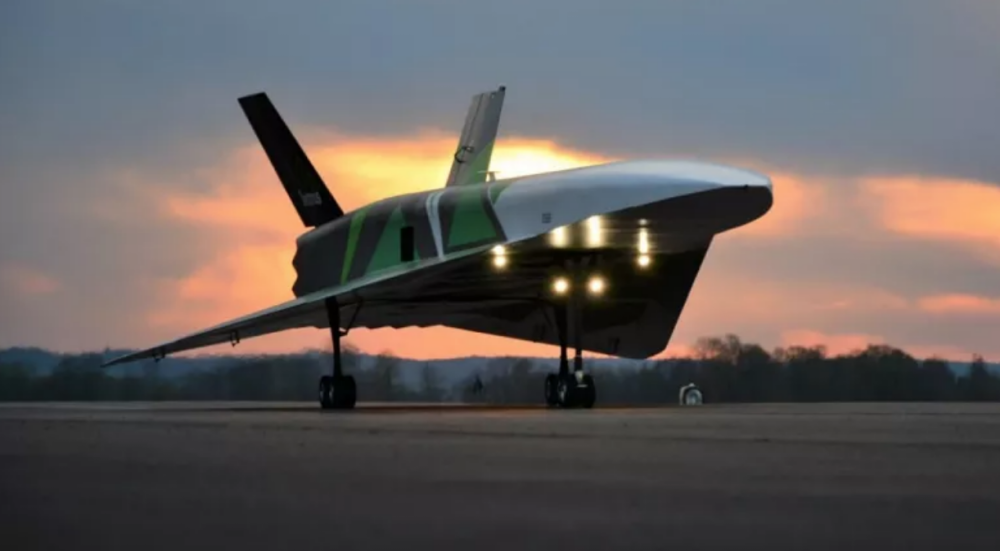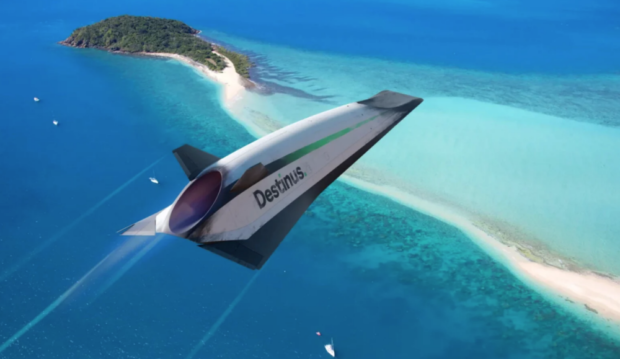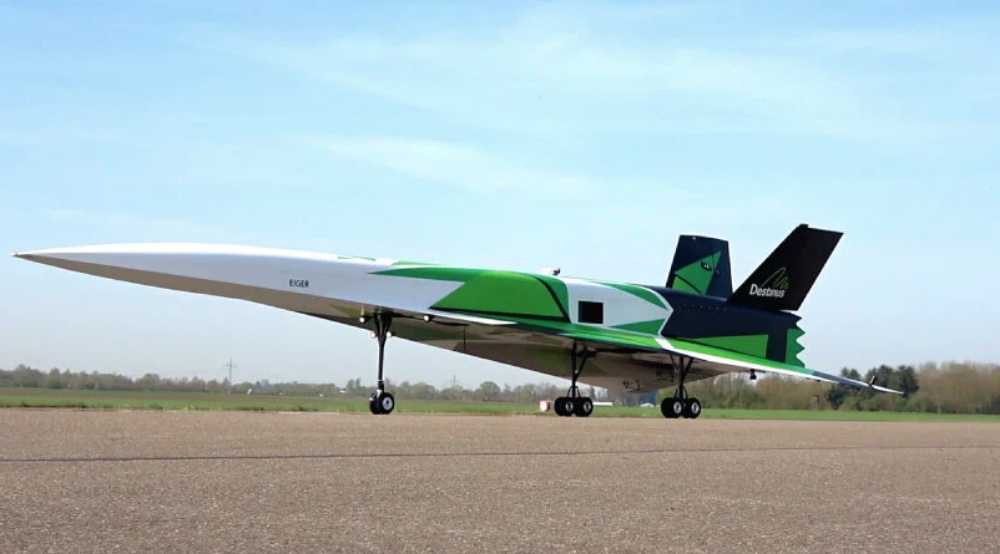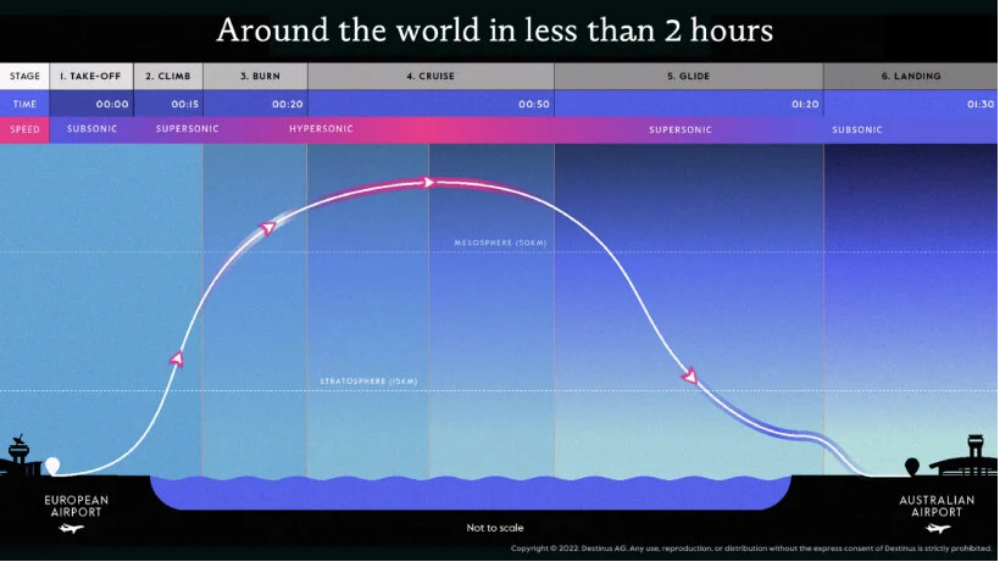Swiss startup Destinus sets its eyes on building a hypersonic airplane fueled with hydrogen that blazes from city to city in a blink of an eye with less emission. The hypersonic plane speeds through velocities more than five times the speed of sound. ‘You can reach the other side of the world in three to four hours without compromising on versatility, cost, or noise,’ says Destinus. In fact, the airplane team says that flying from Frankfurt to Sydney can be cut down to only four hours and 15 minutes instead of the usual 20 hours.
Destinus says that its hypersonic airplanes – the startup plans to build more than one – combine the most advanced aerospace technologies, and that their long-range and high-speed capabilities, enabled by hydrogen as a fuel, can open new flight paths for cargo and passenger transportation anywhere on Earth in no time. ‘Destinus is a designer and producer of ultra-long-range hypersonic aircraft that integrate easily into everyday life because it avoids creating noise and can use conventional airports,’ says Destinus.
On April 6th, 2023, Destinus announced that it has been awarded grants for two projects worth a total of 26.7 million Euros by the Spanish Government to expand its hydrogen propulsion capabilities and further invest in making hypersonic airplanes:
We are proud to have been awarded grants for two projects worth a total of 26.7 million euros by the Spanish Government to expand our hydrogen propulsion capabilities.
These grants were awarded as a part of Spain’s plan to make the country a world leader in producing renewable hydrogen and developing hydrogen-based mobility solutions. The Spanish government invests heavily in developing hydrogen propulsion as part of its economic resilience and transformation plan through strategic projects funded by the European Commission’s Next Generation funds.
12m Euros Awarded by PTA (Aeronautical Technology Plan)
A 12m Euro grant will go towards demonstrating flights powered by hydrogen as a part of a program by the Spanish Ministry of Science. The Center for Technological and Industrial Development (CDTI), the body that oversees the Ministry’s program, has selected the project as a strategic initiative within its Aeronautical Technology Plan (PTA). Together with our partner, ITPAero – a Spanish engine manufacturer, we are jointly developing hydrogen engine testing facilities and showcasing our research in hydrogen combustion with the direct support and collaboration of INTA (Instituto Nacional de Técnica Aeroespacial). The partnership was set up already in June 2022.
14.7m Euros Awarded by PERTE (Strategic Projects for Economic Recovery and Transformation)
In December 2022, under the Ministry of Ecological Transition, the Spanish Institute for Energy Diversification selected Destinus for a new 14.7-million-euro project to demonstrate the feasibility of supersonic flight with hydrogen. It is noteworthy that while the intensity of the aid varies from company to company, Destinus received the highest aid due to its SME start-up character.
Our participation in these two programs enables us to continue our work toward becoming a major player in the hydrogen propulsion industry. We are currently testing a gaseous hydrogen post-combustion jet engine (afterburner) while working to advance other engine technologies using cryogenic fuels such as liquid hydrogen. These technologies will undergo extensive ground testing over the coming year and be integrated onboard our next supersonic prototype, Destinus-3, in 2024.
HOW WILL DESTINUS FLY HYPERSONIC AIRPLANES?
Cutting the flight time to more than half of the usual duration may seem unheard of (but dreamed of). Destinus is putting its foot down in turning this once improbable idea into a myth. As shown in the graph above, the Swiss startup intends for its hypersonic airplane to take off from a Hyperport, or an airport with infrastructure for hydrogen handling and with a mission control center for unmanned aerial vehicles.
Take-off is in the usual horizontal form, but with a difference that Destinus’ hypersonic airplanes quickly accelerate. Once they reach the high-altitude climb phase, these ultra-fast planes ignite the chemical rocket engine to further boost the speed.
‘At these high velocities, it’s a challenge to keep the structure cold. Therefore, we are developing a unique active cooling system solution that converts the thermal energy generated by friction with air into propulsion. Keeping the structure cold enough to survive the external hot flow conditions, while powering the rocket engines,’ says Destinus. Once closer to the destination, the hypersonic airplanes gently reduce the amount of thrust generated and enter progressively into a gliding phase, ready for landing.

In November 2022, Destinus shared the successful flight test of its Eiger prototype at an airport near Munich
NUMERICAL METHODS FOR THE HYPERPLANES
Destinus has embarked on a lengthy research journey to carry out its mission. The team says it’s using numerical methods for the development of hyperplanes, enabling them to dig deep into the main aspects of supersonic and hypersonic aerothermodynamics, from the conceptual design phase to the detailed design phase leading up to manufacturing.
Part of their research is to look into the external and internal aerodynamics which include the design of the vehicle structure, flight qualities, stability, and maneuverability of the airplanes, propulsion engine inlets, exhaust nozzles, flow control valves, internal engine components (such as compressors, turbines, combustion chambers, and the chemical reactions of combustion), and the design of active cooling systems.
In November 2022, Destinus shared the successful flight test of its Eiger prototype at an airport near Munich. ‘Our team is currently analyzing the data from the recent flight tests and is, in parallel, working on our next prototype that will serve as a testbed for supersonic flight and hydrogen propulsion. We aim to start these flight campaigns for this new prototype by the end of 2023,’ says Destinus.
Sources: Press Release; designboom



